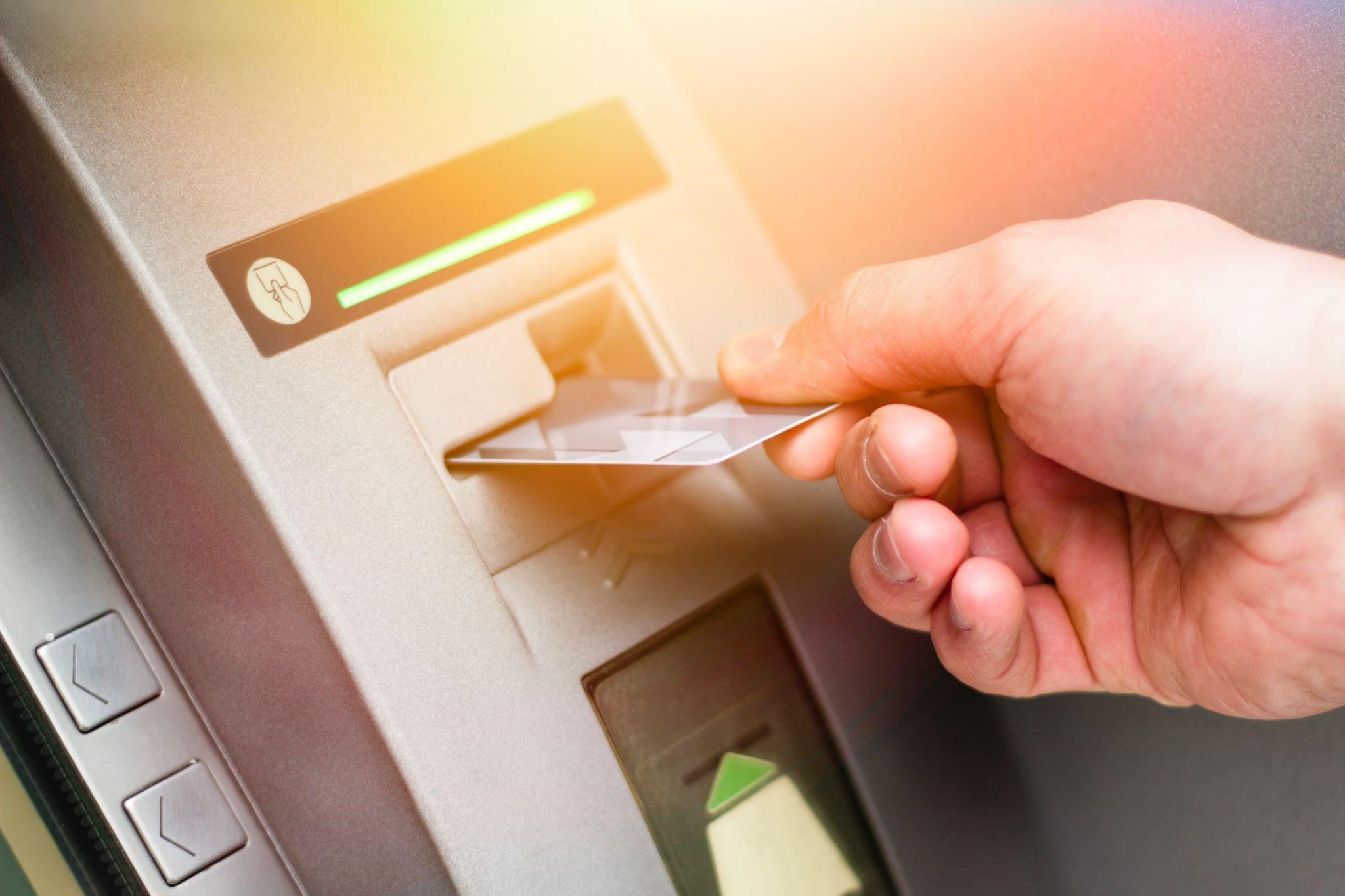What is White Label ATM and What are its Benefits?

ATMs (Automatic Teller Machines) are one of the key foundations of modern banking as they enable various transactions, including cash withdrawals, cash deposits and fund transfers. While banks manage the majority of ATMs in India, there is a relatively new category of ATMs that are not branded or managed by banks. These include White label ATMs that are set up, owned, and operated by non-banks, according to the RBI (Reserve Bank of India).
Read on to understand the fundamentals of White Label ATM, its importance, benefits, limitations and more.
What are White Label ATMs (WLAs)?
White Label ATMs are ATMs that are owned and operated by non-banking entities. ATMs operated under this business model allow customers to use them for banking transactions regardless of the bank they have an account with.
RBI approved the operation and inclusion of WLA ATM by non-banking organisations under the Payment and Settlement Systems Act of 2007. It was introduced to expand India’s ATM network, especially in semi-urban and rural areas.
White Label ATM companies work with banking networks to enable bank customers to use banking services like withdrawing funds, paying bills and depositing cash. White Label ATM (WLA) operators charge card-issuing bank fees to provide this facility to the bank’s clients.
The transaction process in White Label ATM operators consists of a lending bank, a sponsor bank that handles settlements and an ATM network provider. The Sponsor bank provides the cash facility for the White ATM.
How Does White Label ATM Help in Financial Inclusion?
Financial inclusion is concerned with the availability of financial services and adequate financing to low-income individuals and other vulnerable segments of society. ATMs promote financial inclusion and provide customers with various banking services at any location and time.
According to the survey conducted in 2012 by RBI, the country had 95,686 ATMs deployed, with about 70% of the ATMs mostly set up in urban and metro areas. Expand the ATM network and banking services in areas with a limited number of banks available.
In June 2012, the RBI decided to allow non-banking companies to set up and operate ATMs in India. It was observed that permitted banks could not meet the requirement. The main objective was to allow financial inclusion and to increase ATM penetration in tier 3 to 6 cities (semi-urban and rural areas) where bank-owned ATM services were stagnant.
This banking system was accepted widely across the country, allowing banking services to be used at any time and location. It now allows ATM cards to be issued by any bank that can be used at White Label ATMs.
Also Read
Service/Functions Available at White Label ATMs
You can avail of the following services at a white label ATM:
- Dispensing cash as per your requirement
- Depositing cash
- Checking your account information
- Making regular bill payments
- Generating a mini or short statement
- Changing your PIN
- Requesting for a new cheque book
White Label ATM Operators in India
Non-banks set up and operate White ATMs as per the rules laid down by RBI for using ‘other bank’ ATMs. These ATMs accept all domestic debit cards and offer the first five or three transactions per month free of cost, depending on the location.
As of 2021 only 4 White Label ATM operators are authorised by RBI. Check out the list below.
| White Label Operator | Number of ATMs |
| India1 Payments Ltd | 8,022 |
| Tata Communications Payment Solutions | 6,189 |
| Vakrangee | 5,414 |
| Hitachi Payment Services | 5,388 |
Benefits of White Label ATMs
There are many benefits of White Label ATMs:
- Customers benefit from White Label ATMs since they eliminate the need to visit a bank branch on a regular basis
- ATMs are available 24 hours a day, seven days a week, including holidays
- Banks benefit from this because they do not have to maintain a huge staff/office (compared to a system without ATMs). It lowers their branch-operational costs
- Financial inclusion of rural, semi-urban, and low-income people
- It allowed ATM cards to be issued by any bank that can be used at White Label ATMs
- WLA atm also provides mobile recharge, energy bill payments, and other value-added services
Limitations of White Label ATMs
There are also a few limitations of White Label ATMs:
- The issue of unsuccessful transactions is a key source of concern. In the event of a dispute, the dispute resolution method will include three entities, namely the WLA operator, the WLA operator’s sponsor bank, and the customer’s bank and will typically take a lengthy time
- Customers will be discouraged by the cost issue, as they will be obliged to pay a price to use the White Label ATMs, as only a limited number of free transactions are permitted on the WLAs
- White label ATMs’ financial viability is questioned because of their low interchange charge and hefty operational expenses
- If there is a bank-managed ATM in the same area as a WLA ATM, the White Label ATMs may not be able to generate a profit
Growth of White Label ATMs in India
There was an ardent need to increase the number of ATMs deployed across all bank types, particularly White Label ATM machines. This rise was seen across the country, with most White Label ATMs found in Uttar Pradesh, Tamil Nadu, Maharashtra and Bihar.
Due to the steady rise of White Label ATMs, the number of ATMs deployed by WLA atm exceeded 25,000 in March 2021. This corresponds to a 21% CAGR (Compound Annual Growth Rate) between March 2015 and March 2021. The expansion proceeded throughout 2019-21 and there were 19,500 White Label ATMs at the end of March 2019.
Differences Between Brown Label and White Label ATMs
The differences between Brown Label ATM and White Label ATMs are:
| Brown Label ATM | White Label ATM |
| Brown Label ATMs have their hardware and ATM machine leased by a service provider | Non-banking entities own and operate ATMs |
| The sponsor bank’s brand name appears on the Brown label ATM | There is no bank logo on a white label ATM machine |
| The RBI is not directly involved. These outsourcing firms are bound by contracts with their respective banks | The RBI is directly involved as white label companies must obtain a licence or permission from the RBI in order to conduct business |
Final Word
White Label ATMs are run by a non-bank organisation and allow customers from any bank to withdraw money and receive other value-added services. Companies in the WLA category are required to operate 67% of their ATMs in rural areas (tier III to tier VI) and the remaining 33% in urban areas (comprising tier I and II cities). Connecting with potential clients and raising customer knowledge and trust in the safety and convenience of WLAs is just as vital to improving the geographical expansion and financial inclusion of our banking system.
If you don’t have a White Label ATM in your locality or are in urgent need of cash, you can get instant cash loans up to ₹20 lakh at attractive interest rates with Navi Cash Loan. Download the Navi app, apply and enjoy instant disbursals.
FAQs
Tata Communications Payment Solutions Ltd. (TCPSL) operates and manages the Indicash ATM network which is India’s largest White Label ATM Operator.
You can use an ATM card, all national debit cards, prepaid cards, as well as credit cards at an ATM/WLA. The first three or five transactions may also be free, depending on the city where you operate the ATM/WLA.
White Label ATMs were first set up by Tata Communications Payment Solutions Ltd, after getting a go-ahead from the RBI in 2013. It was set up with “Indicash’ as the brand name.
White label ATMs offer a range of services to its customers, such as allowing cash deposits, making bill payments, and generating their account statements. For this, the WLAs charge a fee from the bank that has issued the card.
White Label ATM means ATMs that are set up, owned and managed by companies other than banks. The Reserve Bank of India has allowed non-bank ATM operators under the Payment & Settlement Systems Act 2007 (RBI).
White Label ATMs or WLAs, are often set up and run by a non-bank. As a customer, you can use these machines just like any other ATM. WLAs provide debit card services including cash withdrawal and inquiry.
You can use your card for services such as cash withdrawals and inquiries. The most recent guidelines now permit these ATM operators to provide this service. They can also provide bill payment services via their ATMs.
Tata Communications Payment Solutions Limited (TCPSL) was the first company to receive a licence from the RBI to open a WLA ATM in India, Mumbai.

Customer’s Feedback
No comments found.10 Best Bank for Savings Account in India [Highest Interest Rate 2023]
Savings account is a type of financial instrument offered by several banks. It lets you safely depo... Read More »What is Issuer Identification Number (IIN)- Working and Importance
What is an Issuer Identification Number (IIN)? Banks and financial institutions assign a distinc... Read More »What is a Vostro Account – Meaning, Working and Difference
What is a Vostro Account? A Vostro account is a bank account held by a domestic bank on behalf o... Read More »What is a Solvency Certificate? – Format, Documents Required & How to Apply Online?
What is a Solvency Certificate? A solvency certificate is a legal document furnishing the detail... Read More »What is Merchant Banking – Services, Features, Functions and Example
What is Merchant Banking? Merchant banking is a set of select banking and financial services off... Read More »Automated Clearing House: Objectives, Types and Process
Automated Clearing House is an electronic fund transfer network that manages automatic and direct... Read More »How to Redeem Credit Card Reward Points ?
Credit Card Reward points are types of incentives that customers receive when they use a credit car... Read More »What is Electronic Clearing Service (ECS) in Banking and How does it Work?
What is Electronic Clearing Service (ECS)? Electronic Clearing Service (ECS) is a method of elec... Read More »What are Credit Card Validators and How to Use them?
What is a Credit Card Validator? A credit card validator is a tool that checks the validity of a... Read More »What is Cash Management and How Does it Work?
Managing available capital can make sure that a small business stays afloat. Cash management is an ... Read More »What are Prepaid Expenses? – Definition, Examples, and Journal Entry
Prepaid expenses represent payments made in advance for products or services expected to be incurre... Read More »Increase Credit Card Limit – Important Tips and How to Do It?
The credit card limit is the maximum amount of money you can spend using your credit card. Your cre... Read More »Top 10 Chit Fund Schemes in India in 2023
Chit funds are one of the most popular return-generating saving schemes in India. It is a financial... Read More »10 Best Gold ETFs in India to Invest in April 2023
Gold ETFs or Gold Exchange Traded Funds are passively managed funds that track the price of physica... Read More »10 Best Demat Accounts in India for Beginners in 2023
Creation of Demat accounts revolutionised the way trades were conducted at the stock exchanges. It... Read More »20 Best Index Funds to Invest in India in April 2023
What is an Index Fund? An index fund is a type of mutual fund or exchange-traded fund (ETF) that... Read More »Best Arbitrage Mutual Funds to Invest in India in April 2023
Arbitrage funds are hybrid mutual fund schemes that aim to make low-risk profits by buying and sell... Read More »10 Best SIP Plans in India to Invest in April 2023
What is SIP? SIP or Systematic Investment Plan is a method of investing a fixed amount in ... Read More »10 Best Corporate Bond Funds in India to Invest in April 2023
Corporate bond funds are debt funds that invest at least 80% of the investment corpus in companies ... Read More »10 Best Bank for Savings Account in India [Highest Interest Rate 2023]
Savings account is a type of financial instrument offered by several banks. It lets you safely depo... Read More »





















